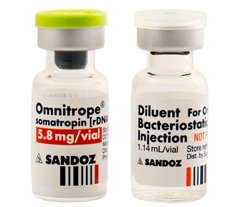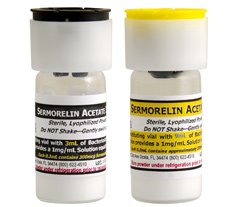Testosterone Testing Results Explanation

Getting a clear testosterone testing results explanation is not always as easy as one might think. Depending on the lab and the doctor, what one place may say is low testosterone another may determine it to be normal.
With these differences in testosterone test results, a person may wonder how to tell if he or she has Low T.
Of course, it would help of all labs, and medical centers agreed on the “normal” range for testosterone levels, but that is not the case – at least, not yet. Hopefully, someday it will be. Even so, if there were a set testosterone test results scale, the ultimate determination of low testosterone would still be left up to the doctor. That is why a person should always contact a
hormone replacement therapy specialist for this diagnosis.
The HRT physician understands that a man or woman can have testosterone reading in the lower end of the normal range and still have Low T if the symptoms associated with this decline are present.
Conversely, there are people with extremely
low testosterone blood test results that do not have any symptoms. The saying “if it is not broken do not fix it” applies to this situation. Unless there are symptoms of Low T, there is no reason for testosterone replacement therapy.
Difference Between Free, Total, and Bioavailable Testosterone Test Results
Testosterone measurement may consist of three different readings:
- Total testosterone
- Free testosterone
- Bioavailable testosterone
Here are the three different testosterone blood test results explained:
| Total Testosterone |
Free Testosterone |
Bioavailable Testosterone |
| Measures the amount of testosterone in the bloodstream that is floating freely and available for immediate use as well as that which is bound to both albumin and sex hormone-binding globulin. Roughly two-thirds of testosterone is bound to SHBG and less than one-third to albumin. |
Measures only the amount of testosterone not bound to albumin or sex-hormone binding globulin. This testosterone is available to the body’s tissues for use. About four percent of testosterone circulates freely. |
Measures both free and albumin-bound testosterone. Testosterone binds very loosely to albumin, making it easy for the target tissues to acquire its signals and receive the corresponding actions. |
Testosterone Test Results – What Is Normal and What Is Abnormal?
What is
normal testosterone? That is the question that has no clear answer. Before getting testosterone test results explained, let us examine the differences between some of the various labs in the charts below.
Here are the most common testosterone test results – normal range for men:
| Laboratory |
Total Testosterone |
Free Testosterone |
Bioavailable Testosterone |
| LabCorp |
348 – 1197 ng/dL |
52 – 280 pg/mL |
40 – 250 ng/dL |
| Quest |
250 – 1100 ng/dL |
46 – 224 pg/mL |
110 – 575 ng/dL |
| Mayo Clinic |
240 – 950 ng/dL |
3.47 – 19.0 ng/dL * |
40 – 235 ng/dL (1) |
*A note about the free testosterone testing results explanation above is that it encompasses men aged 30 to 60. Those who are younger will be higher on the scale than males closer to sixty. For example, a man of 50 years of age will fall between 4.06 and 15.6 ng/dL on the scale.
(1) Bioavailable range changes with age listed at the low end for up to 70 years and the high end for a 30-year old male; for example, a man in his fifties will be between 50 and 190 ng/dL.
Here are the testosterone test results for women:
| Laboratory |
Total Testosterone |
Free Testosterone |
Bioavailable Testosterone |
| LabCorp |
10 – 55 ng/dL (1)
7 – 40 ng/dL (2) |
1.1 – 6.3 pg/mL |
0.0 – 9.5 ng/dL |
| Quest |
2 – 45 ng/dL |
0.2 – 5.0 pg/mL |
unavailable |
| Mayo Clinic |
8 – 60 ng/dL |
0.06 – 1.03 ng/dL * |
0.8 – 10 ng/dL (3) |
*This range is for women aged 30 – 70, with all ages beginning at 0.06 but changing dependent on age. A woman of 50 will fall under 0.92 ng/dL.
(1) Premenopausal
(2) Postmenopausal
(3) Women 20 – 50 0.8 – 4.0 ng/dL on oral estrogen; over 50 not established
What makes these results even harder to interpret is that some labs even have conflicting ranges listed on multiple pages on their websites. For the layperson trying to get an understanding of his or her blood test results, this can be exceptionally frustrating.
A more detailed chart by age can be found in the report
Testosterone Levels Chart.
Some labs may provide testosterone test results nmol/L. Here is conversion information:
| Type |
Gravimetric Unit |
Conversion Factor |
International Unit |
| Total Testosterone |
ng/dL |
0.0347 |
nmol/L |
| Free Testosterone |
pg/mL |
3.47 |
pmol/L |
| Bioavailable Testosterone |
ng/dL |
0.0347 |
nmol/L |
Testosterone Test Results for Women and Men
Now that you know the differences between the three lab tests and their normal ranges, what do your test results mean?
The first thing to look at is not the numbers, but the symptoms you are having. Our report:
Is it Low T? Know the Signs and Symptoms of Low Testosterone can help you determine if you have symptoms associated with low testosterone. Even if your test results fall in the lower end of the testosterone test results normal scale, you may have Low T if some of the symptoms are present.
Testosterone levels that are too high can also be a problem for some people. Our report:
High Testosterone Levels: Is It Bad for You can shed some light on this subject.
Please call Kingsberg Medical at (770) 772-4200 for a free consultation with a hormone specialist to discuss your situation. Diagnostic testing and affordable treatment options are available to men and women throughout the US.
Brian Leeber
 Getting a clear testosterone testing results explanation is not always as easy as one might think. Depending on the lab and the doctor, what one place may say is low testosterone another may determine it to be normal.
With these differences in testosterone test results, a person may wonder how to tell if he or she has Low T.
Of course, it would help of all labs, and medical centers agreed on the “normal” range for testosterone levels, but that is not the case – at least, not yet. Hopefully, someday it will be. Even so, if there were a set testosterone test results scale, the ultimate determination of low testosterone would still be left up to the doctor. That is why a person should always contact a hormone replacement therapy specialist for this diagnosis.
The HRT physician understands that a man or woman can have testosterone reading in the lower end of the normal range and still have Low T if the symptoms associated with this decline are present.
Conversely, there are people with extremely low testosterone blood test results that do not have any symptoms. The saying “if it is not broken do not fix it” applies to this situation. Unless there are symptoms of Low T, there is no reason for testosterone replacement therapy.
Getting a clear testosterone testing results explanation is not always as easy as one might think. Depending on the lab and the doctor, what one place may say is low testosterone another may determine it to be normal.
With these differences in testosterone test results, a person may wonder how to tell if he or she has Low T.
Of course, it would help of all labs, and medical centers agreed on the “normal” range for testosterone levels, but that is not the case – at least, not yet. Hopefully, someday it will be. Even so, if there were a set testosterone test results scale, the ultimate determination of low testosterone would still be left up to the doctor. That is why a person should always contact a hormone replacement therapy specialist for this diagnosis.
The HRT physician understands that a man or woman can have testosterone reading in the lower end of the normal range and still have Low T if the symptoms associated with this decline are present.
Conversely, there are people with extremely low testosterone blood test results that do not have any symptoms. The saying “if it is not broken do not fix it” applies to this situation. Unless there are symptoms of Low T, there is no reason for testosterone replacement therapy.




















